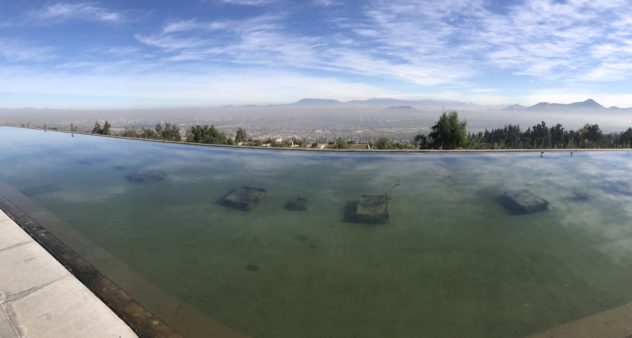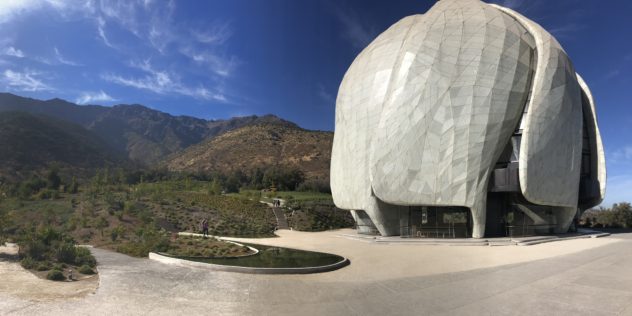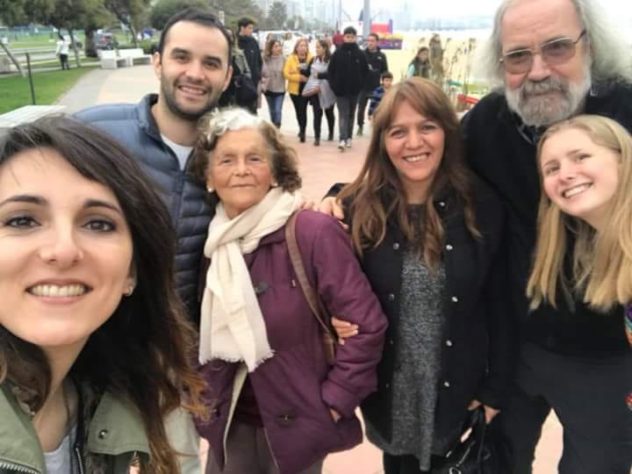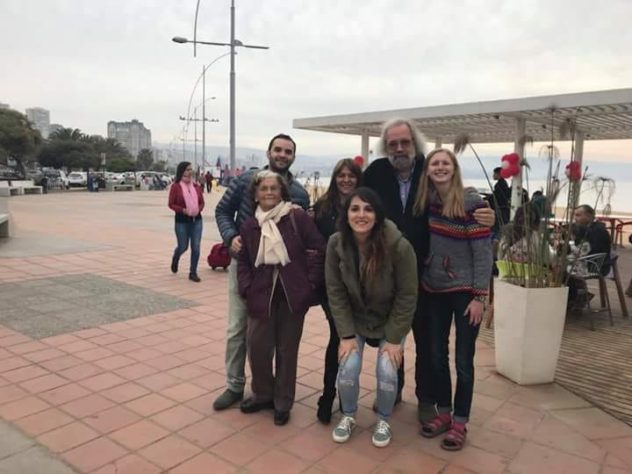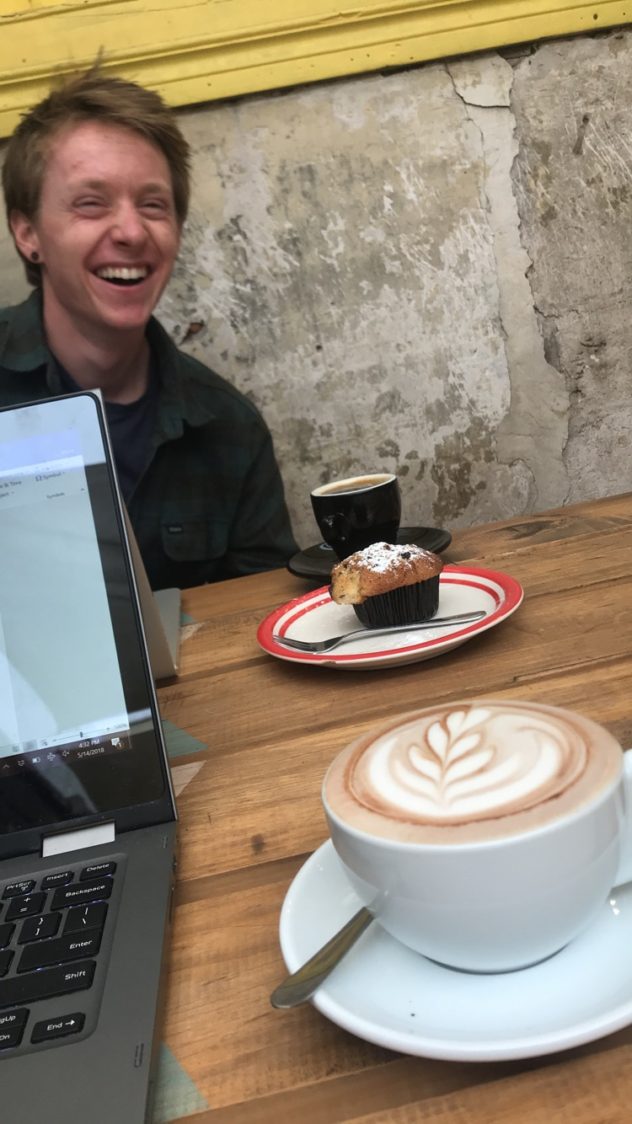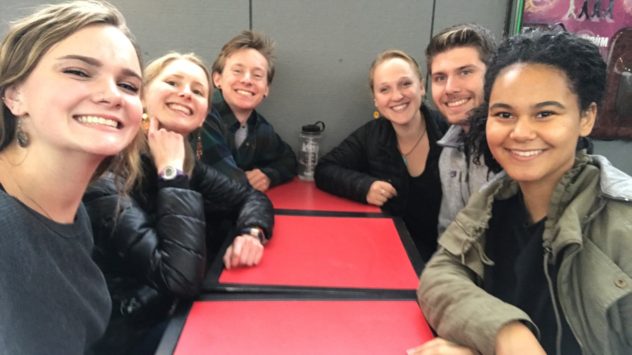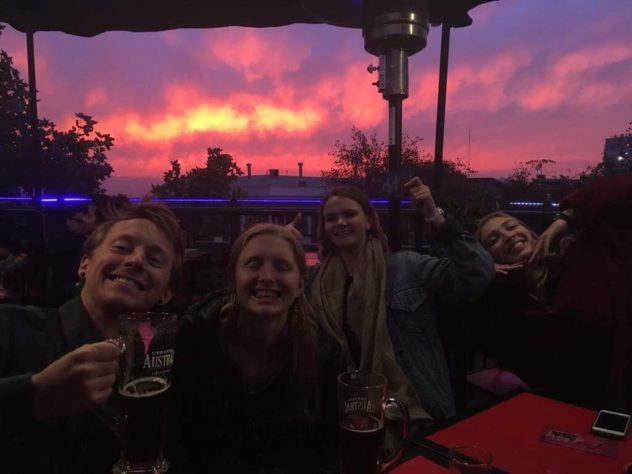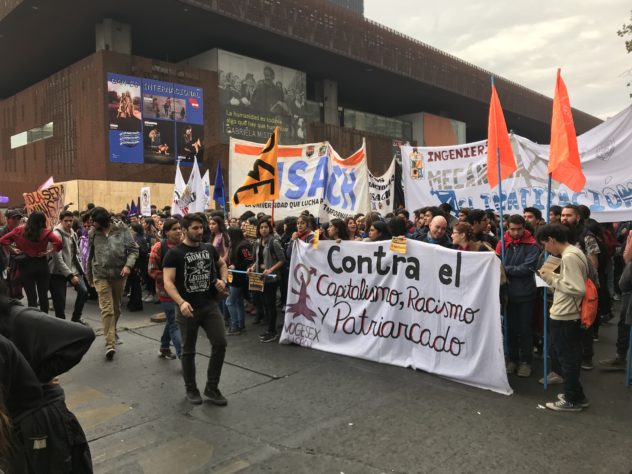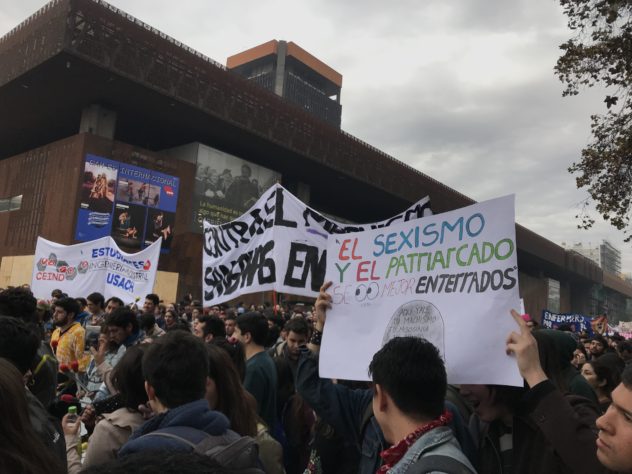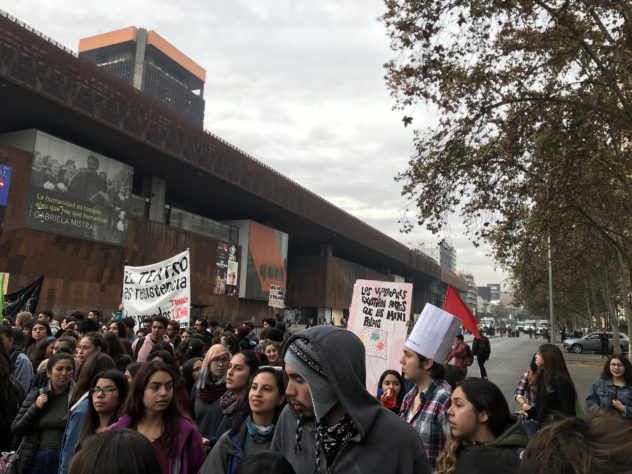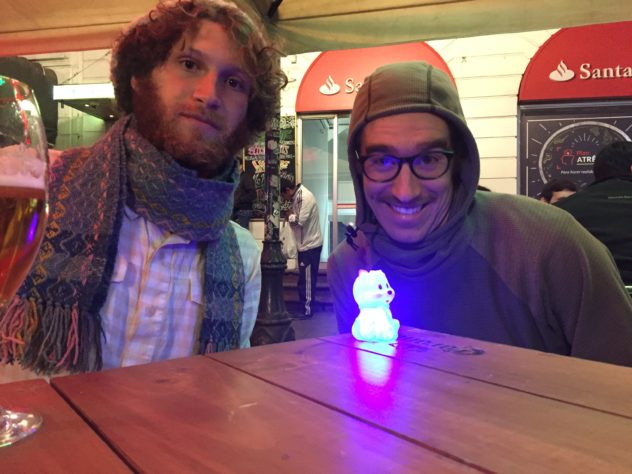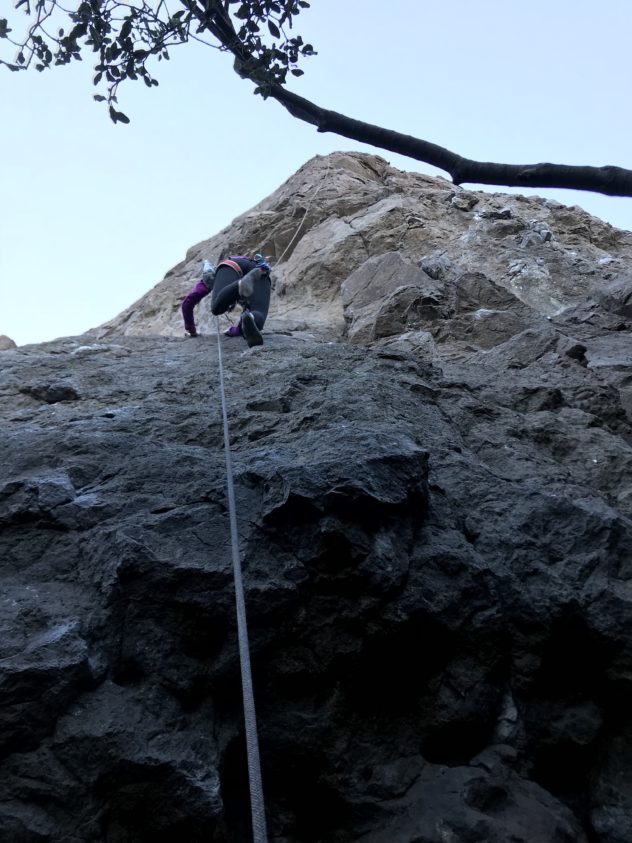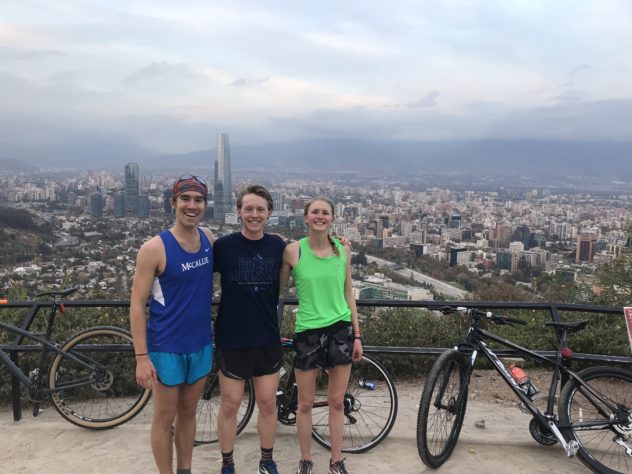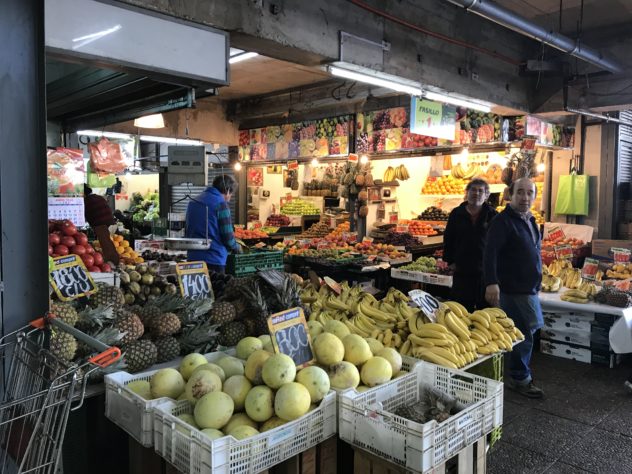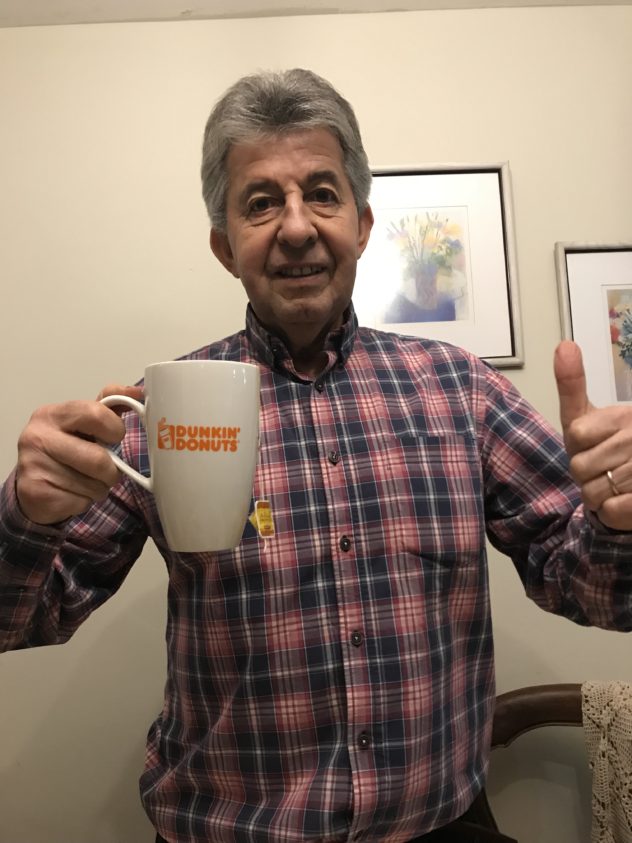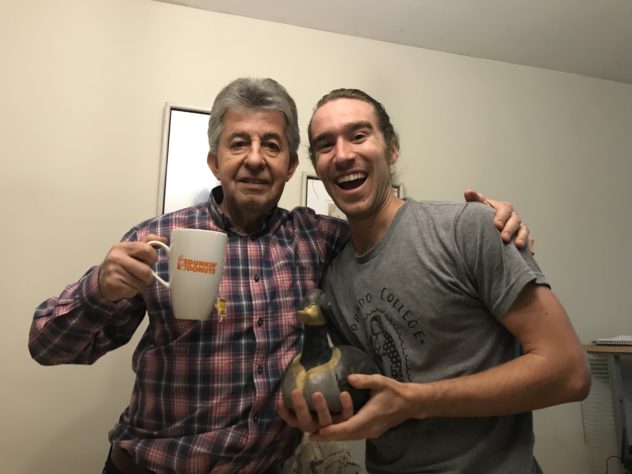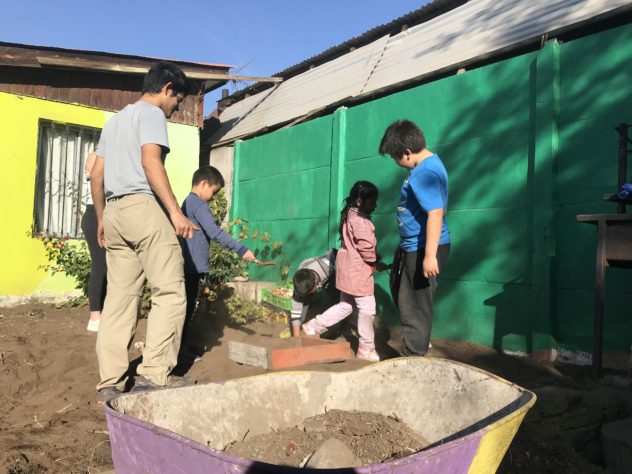Good Friday and Pomaire
We’ve been here a full week! It seems like longer, though, since we’ve fallen into a routine.
Friday was a day of great views and delicious food. I woke up early to meet David at Parque Metropolitano to run and also hike to the top of the park, where there’s a huge statue of the Virgen Mary overlooking the city. Since the sun rises at practically 8:00, setting out to run at 7:15 meant running by street lamp, with almost no one around. This Easter holiday weekend leaves Santiago “empty,” as many make their way to Viña del Mar or Valparaíso for a mini vacation. For the first time all week, I wasn’t surrounded by commuters – office workers, nurses in their scrubs, bikers, etc. We reached the trail to the statue and David set off running, I half-running (if you could even call it running), half-walking, as I nearly died of cardiac arrest trying to run the trail the day before. But we reached the statue at sunrise and she was incredible! The panoramic view of Santiago at dawn, coupled by such a holy figure during holy week, was truly special. We will return often.
I got back home and Roberto was putting out the last components of my breakfast while fixing Paula’s NesCafé. They were both especially slow because of a wonderful and hilarious circumstance the night before. Every 29th of the month, they get together with 4 married couple friends, and have gnocchi. Every. Single. 29th. They rotate houses, and the host can choose to make gnocchi from scratch or buy it, or elect to go to an Italian restaurant with gnocchi. It’s the most incredible routine I’ve ever heard of. They’ve apparently been doing this for years, however it’s been a while since the last dinner because there was no 29th of February this year. That’s how rigidly they follow this custom. Again, incredible.
I wolfed down my breakfast, but after an hour of running and probably 20 minutes of steep hiking, I knew that a yogurt, a banana, and toast would not stick to my bones. I went to this pastelería right by the metro that I had taken note of for its muffins and donuts. I may or may not have had the most decadent muffin in my life. I just picked the chocolate muffin, knowing I couldn’t go wrong. I got to school, took a bite into it, and discovered it was CREME FILLED. It was like eating a Boston creme donut, but with chocolate creme and it was a muffin. This muffin was likely as holy as that statue two hours earlier. (Sorry to all that I get on these long food escapades…I can’t help it).
I said there were good foods, but also good views, this Good Friday – gnocchi and muffins, the statue, yes, but also the top of the Costanera building. About a half mile from Austin’s apartment is a huge, glitzy mall. The mall is five stories and has fancy gelato places, the North Face, Mammut, designer products, etc. But the mall is just the base of the building, which is the tallest in South America. 61 floors, which you ascend in an elevator ride that lasts 40 seconds long. We intentionally went at sunset, and it was stunning. A full moon, plus the silhouette of Parque Metropolitano and the statue that I had just visited that morning, made the complete city skyline unreal. Austin asked how it compared to the New York City skyline, and of course, I replied that Santiago isn’t as large and as well-lit, but NYC can’t compete with the mountains surrounding Santiago on all sides. It was spectacular.
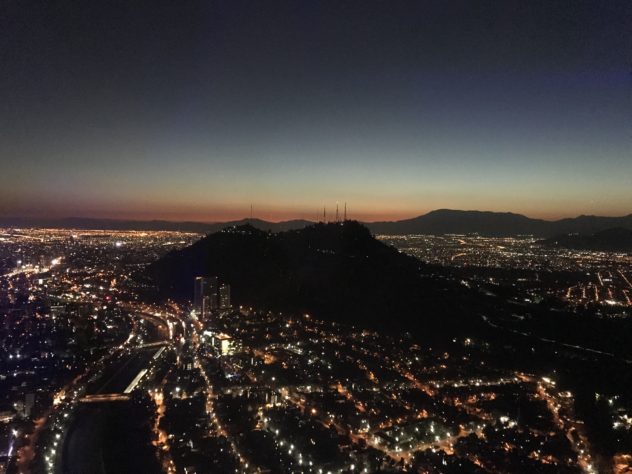
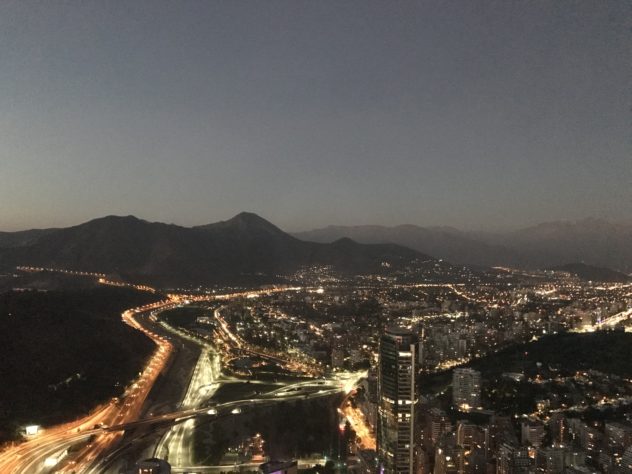

The fun continued today when we visited the rural town of Pomaire (Pohm-aye-ray, as opposed to Pohm-aire, which I foolishly said in front of Roberto and Paula…) The town is located an hour southwest of Santiago and is known for ceramics. We arrived at a house two streets from town, owned by a lovely woman named Marisol. Marisol and her family are all experts in clay, which is called “greda.” She and her daughter Javiera and niece Victoria fixed us a fantastic breakfast upon arrival, consisting of eggs, NesCafé (of course), fruit kebabs with honey, and a traditional bread – “pan amasado,” or “kneaded” bread – with the best blackberry (“mora”) jam I have ever tasted. I could’ve probably just eaten the bowl of jam.
After breakfast, Marisol explained to us what her work is like. When she’s not making all sorts of pots and cups and vases, she’s traveling around selling them. Competition is fierce, as there are so many ceramics workers from Pomaire and she must keep her prices low to stay competitive. Some sellers from Pomaire also sell poorly crafted dishware, which can jeopardize her reputation as a skilled potter. She’ll often have to talk to potential buyers for 20 minutes explaining the process and her guarantee to replace any unsatisfactory or damaged pieces. However, she and the other workers from Pomaire and the towns she visits really get along and help each other. They use the verb “chaveliar” to refer to the exchange between themselves. Instead of buying things off of each other, they’ll pool their resources so that everyone can have a bit of everything – from potatoes to eggs, salt to cilantro. “Chavela” is a nickname for Isabel, but neither Marisol nor Isa could explain to me why a verb was formed from that…

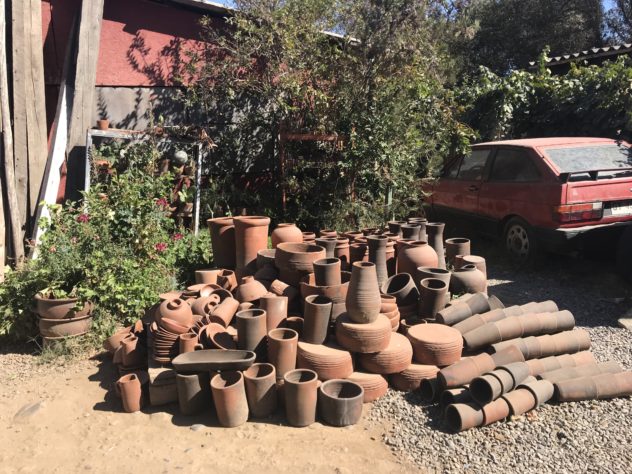
We cleaned up breakfast and checked out her workshop in the backyard, which has three different wheels for throwing clay and just piles and piles of vases and dishware. Marisol had said it was time for us to “lagartijear,” another chilenismo. “Lagarto” means lizard, so it means basically to make like a lizard and sunbathe. During this time, I talked with Isa about these chilenismos and others. Another one we had learned before arrival is “al tiro,” meaning “at this moment.” Isa says that in ye olden days, to call people together for a gathering (say lunch, even), a rancher would often shoot off a gun. Since “tiro” means “shot” (noun, a shot from a gun), “al tiro” literally means at the time of shooting. It means drop what you’re doing and do _____ right now.
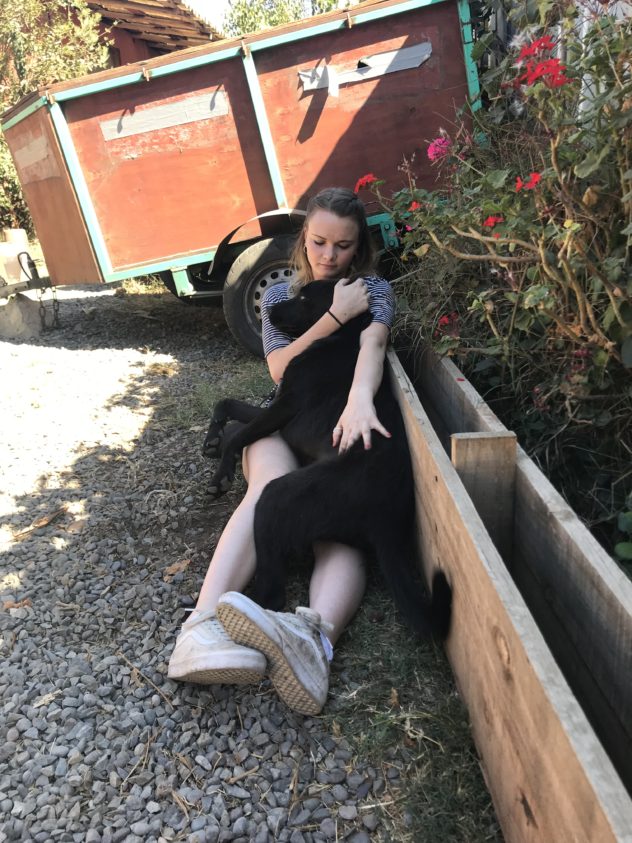
After this brief break, we went back inside to prepare our lunch of empanadas. We made dozens of empanadas. Small empanadas, but still. I helped chop veggies for the “pebre,” which is the Chilean version of pico de gallo – tomato, onion, red chili sauce, vinegar, and cilantro. My classmate Katie was crying while chopping the onions (cebollas), and Isa told us that Chileans often refer to something tear-jerking as “cebollante.” The empanadas we made were mushroom and cheese and spinach and cheese, each type being folded slightly differently. Since we were a big group, we were using prepared dough, which comes in raw stacks and is cut to about the size of corn tortillas. You place a bit of filling on the dough, wet your fingers in a bowl of water, then wet the entire rim of the dough. Then you fold it in half and press the edges together firmly, then do one more decorative fold to literally seal the deal. Marisol also made some traditional empanadas, which contain meat (piño, which means “herd” or “sheep”…so it really could’ve been anything), lots of onion, and then a single hard boiled egg, olive, and raisin. They’re about twice the size of the veggie empanadas. Once the empanadas were in the oven, we made our way into town.
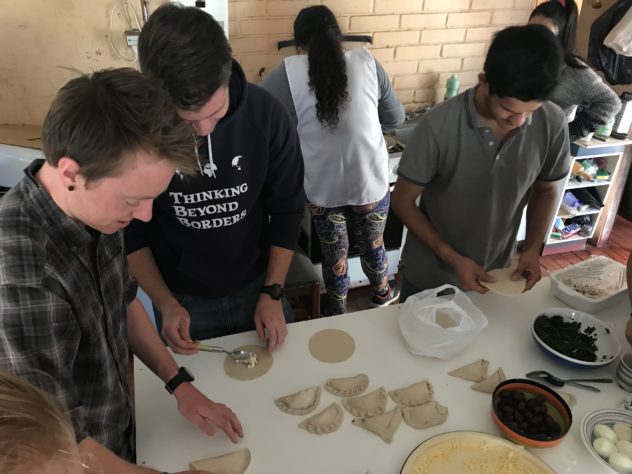
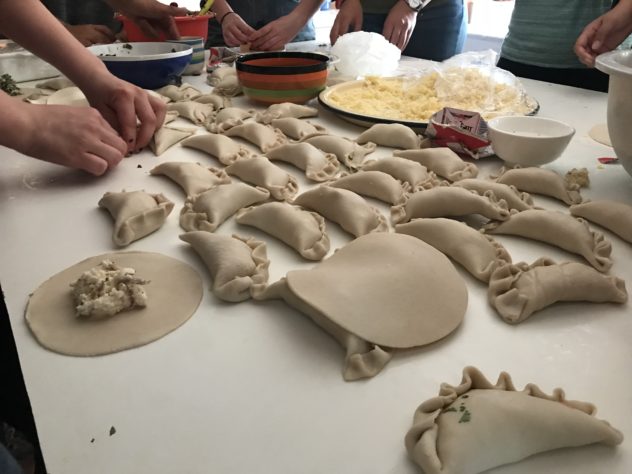
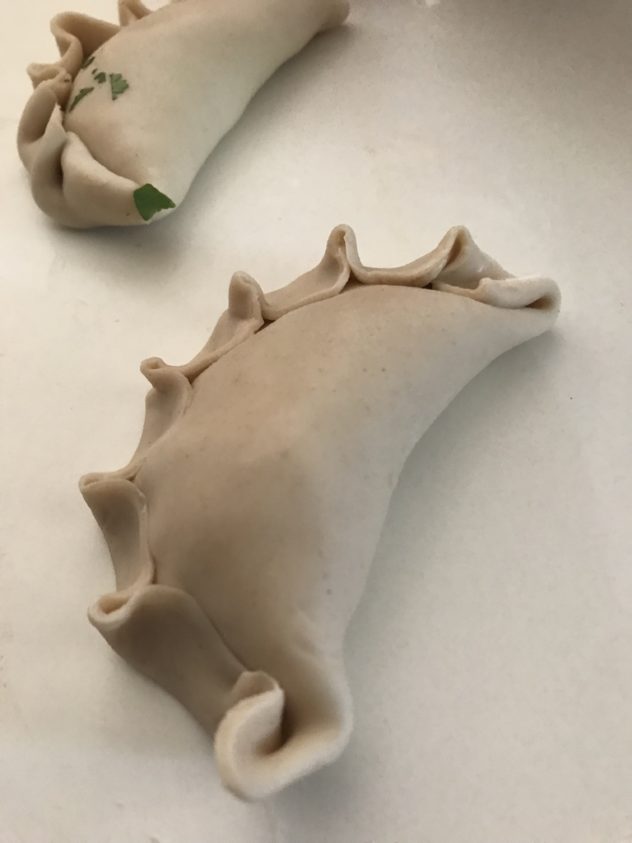
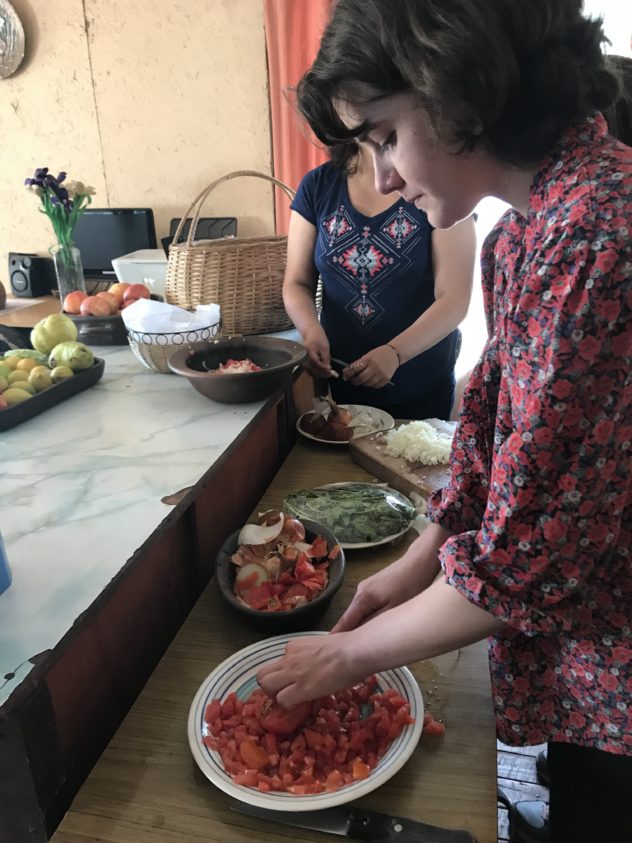
Marisol brought us to the main firing oven for the ceramic works. They burn pine and unwanted wood when first firing the pieces. Then they use various waste, like onion peels, corn husks, or cow poop to create a thick smoke in the oven if they want the pieces to be black. This process never turns the pieces completely black, but close. Marisol explained that different types of clay can also yield other colors and come at varying costs, brought from different regions of Chile. The variety of shapes and sizes of these works is incredible. There were pots that I could probably stand and sit in, down to tiny little bowls for your coffee spoon. All of them are constructed using handmade tools and devices that allow the workers to make pieces of the exact same dimensions.
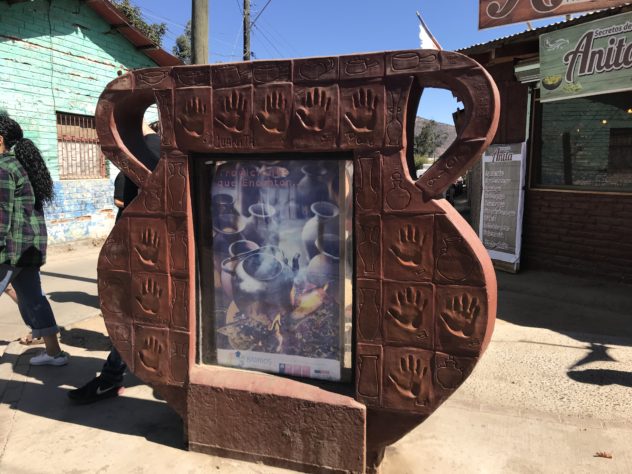


The town was very busy – only two streets, but busy with tourists. Every shop is selling either food or souvenirs. If the town were to have a symbol, it would be the “chanchitas” or little pigs. Pomaire has a rich indigenous history, and the native peoples especially revered pigs as not only a source of food but also a symbol of well-being. All of the shops, therefore, sell tiny ceramic chanchitas, chanchita banks, chanchita sugar bowls, etc. These chanchitas almost always have only 3 legs, as it is said that a three-legged pig is good luck.
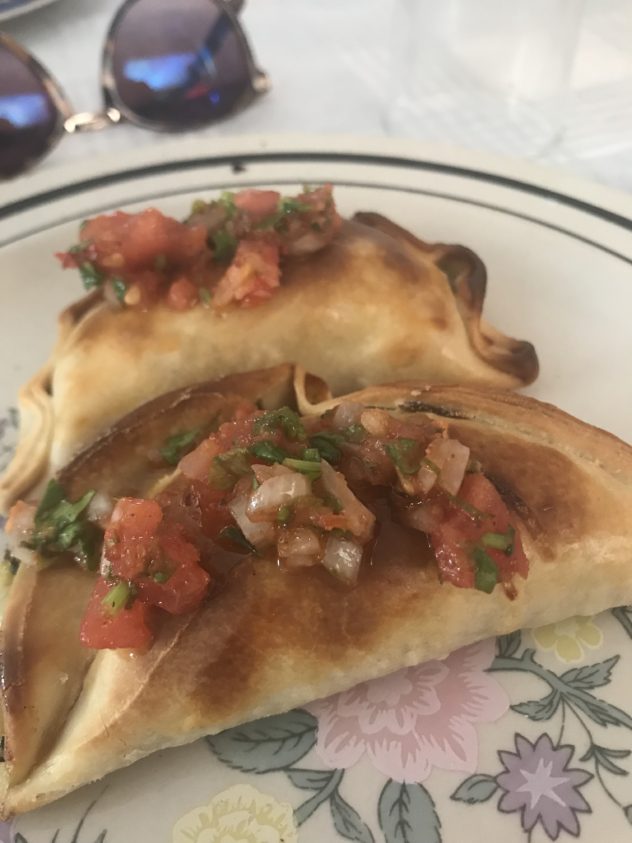
We returned to Marisol’s to have a hefty lunch of empanadas, which she had also covered with an egg wash to make them look shiny. I only mention this because she called it a “pintura de huevo,” or “egg painting.” Full and sleepy, we then returned to the workshop so we could mess with the wheels. Some of my classmates tried their hands at throwing (a fair amount of us actually have ceramics experience. Throwback to my entire high school career with the one and only Claudia Black), while Marisol taught us how to make our own chanchitas.
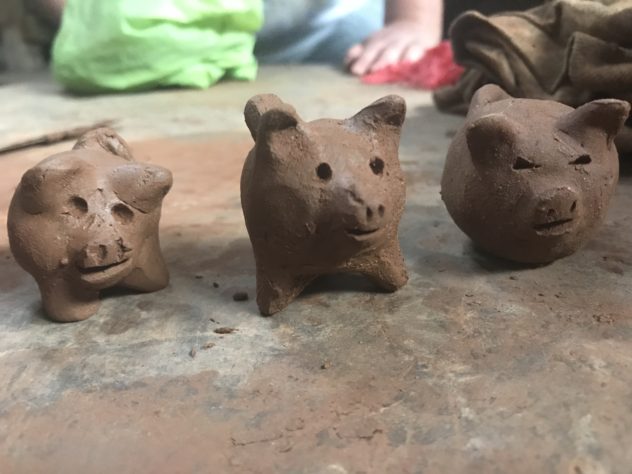
Now I’m back at home resting after a delicious dinner that, much to Roberto’s good fortune, had a very mayo-heavy potato salad. Paula told me she had watched “Extreme Couponing” for the first time that day and was shook. We got into talking about other American customs, and she said she really admires how we have have bridesmaids and grooms, best men and maids of honor (though she thinks a pretty bridesmaid dress doesn’t exist). She also thinks it’s very sweet how we bring a gift of some sort to greet our new neighbors when they move in. Same goes for when we bring meals over to family and friends’ houses after a loved one has died, so they don’t have to cook. It was refreshing hear someone praise America, in any capacity.
After dinner:
Paula: Do you want ice cream?
Me: A little.
Roberto: Not for me.
Us: Really?
Roberto: As in, not “a little” for me. A full portion.
All is right with the world.


